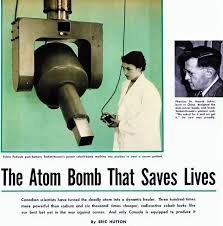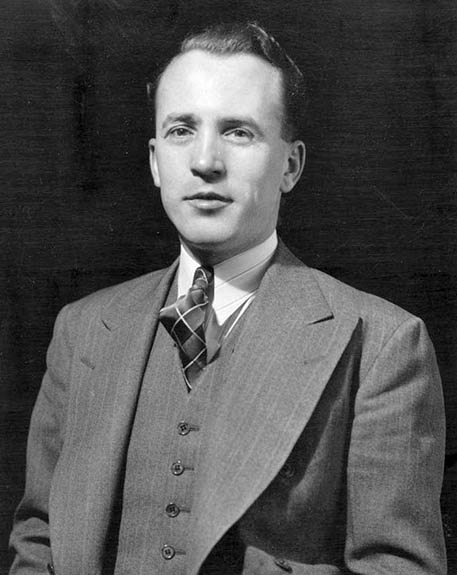1998 INDUCTEE Harold Johns, PhD Cancer, The Early Days - Health Care Pioneers, Patient Care
July 4, 1915
(Chengtu, China)
August 23, 1998
PhD, University of Toronto (1939)
1985: W.B. Lewis Award, Canadian Nuclear Society
1983: Medal of Honour, Canadian Medical Association
See All AwardsAwards & Honours:
1985: W.B. Lewis Award, Canadian Nuclear Society
1983: Medal of Honour, Canadian Medical Association
1982: R.M. Taylor Award, Canadian Cancer Society
1980: Gold Medal, American College of Radiology
1978: Officer of the Order of Canada
1973: Canada Gairdner International Award
1971: Henry Marshall Tory Medal of the Royal Society of Canada
1951: Fellow of the Royal Society of Canada
Canadian Science and Engineering Hall of Fame

Founded the field of medical physics in Canada

A scientist, mentor and innovator
Trained in mathematics and physics, Dr. Harold Johns is famed for applying the principles of physics to medicine and making significant contributions to cancer research. Dr. Johns joined the faculty at the University of Saskatchewan where he established the medical physics group at the Saskatchewan Cancer Commission. This focus on cancer led to his ground-breaking research and development of the first Cobalt-60 Beam Therapy Unit, a revolutionary device that would advance cancer diagnosis and treatment and save millions of lives worldwide. Dr. Johns’ lifelong research and devotion to cancer research has shaped the modern field of medical biophysics and advanced imaging in Canada.
Key Facts
His textbook, The Physics of Radiology, was printed in four editions and translated into several languages
Was the first to receive the Medal of Honour from the Canadian Medical Association, the highest honour that the CMA can bestow on a person who is not a member of the medical profession
Showed the DNA damage in cells exposed to ultraviolet rays.
Was influential in the development of CT scanners and mammographic imaging
Professional timeline
Impact on lives today
When Dr. Johns began his research on radiation therapy, deep seated tumours were impossible to treat. As a result, rates of terminal cancer were much higher than they are today. Thanks to the pioneering work of Dr. Johns and his team, as of 2011, approximately 35 million cancer patients worldwide have benefited from Cobalt 60 therapy. Cobalt therapy for cancer treatment is still the primary mode for radiation treatment in many countries. Moreover, many scientists continue to follow Dr. John’s pioneering work in medical imaging, taking this area of research to previously unimagined arenas.

1998
-
Harold Johns posthumously inducted into the Canadian Medical Hall of Fame
Hull, Quebec
-
Sabbatical with Dr. Jack Boag at the Institute of Cancer Research in Sutton, England
This led to a focus on a major research program in medical imaging. As always, his energy and dedication, coupled with talented students and dedicated resources, yielded top-quality research contributions.
-
Sabbatical with Dr. Max Delbrück, a pioneer in the field of molecular biology
This led to a new research program in UV photochemistry
-

Dr. Johns became Head of the Physics Division of the Ontario Cancer Institute in Toronto while simultaneously building the Department of Medical Biophysics at the University of Toronto.
CancerRemaining at U of T until 1980, Johns spent many years studying the chemical processes that lead to radiation damage as well as exploring medical imaging.
-

Harold Johns' influential textbook, The Physics of Radiology, was published.
CancerThe book was considered a leading and authoritative textbook in the field for decades.
-

Maclean’s magazine published a story on the Cobalt-60 unit with the headline “The Atom Bomb That Saves Lives.”
This title stuck and many people began to refer the unit as the “cobalt bomb”
-

In October 1951, Dr. Johns and his team made history with his innovative device, the Cobalt-60 Beam Therapy Unit
Cancer, Evidence-based Medicine & Clinical TrialsIt was put to use with the first successful treatment on a human cancer patient. The treatment had an immediate impact on the survival rates of a number of cancers, particularly cervical cancer.
-

Following the war, Johns was invited to join the University of Saskatchewan.
Health and Medical Education & Training, CancerHe accepted a joint appointment as an assistant professor and a physicist for the Saskatchewan Cancer Commission. This latter experience set Johns on the path to innovative cancer treatments.
-

Dr. Johns joined the University of Alberta.
Soon after his arrival, the Second World War broke out. During the war, Dr. Johns trained commonwealth air force pilots in radar and radiology.
-
The son of missionaries, Harold Johns grew up in Western China.
In 1926, he moved to Canada with his family and pursued an education in physics from both McMaster University and the University of Toronto.
1926
As a scientist, mentor and educator, one of his greatest contributions lays in the legacy of the students who went on to work in fundamental cancer research and advanced imaging.


